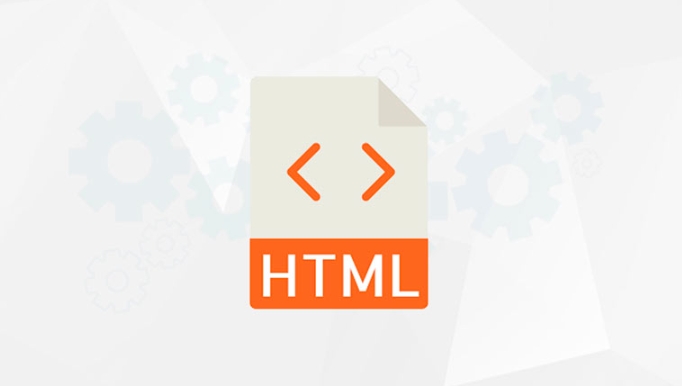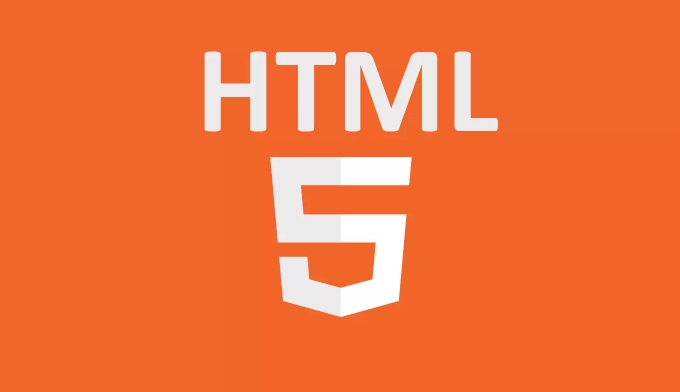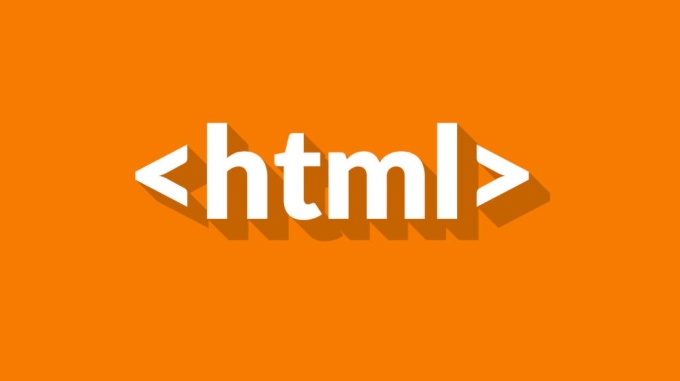To build a web application that runs offline, you should use Service Worker technology to achieve offline caching. 1. Register the Service Worker and listen to the install event to cache necessary resources; 2. Listen to the fetch event to decide to return data from the network or cache; 3. Select the appropriate cache policy according to the resource type, such as "cache priority" for static resources, and "network priority" for dynamic content; 4. Pay attention to HTTPS requirements, cache version updates and debugging tools to ensure that Service Worker takes effect correctly. The entire process needs to be finely configured to avoid functional failure.

The key to building a web application that runs offline is to take advantage of the "offline caching" function provided by HTML5. Through AppCache or Service Worker technology, web pages can still be loaded and run without a network connection. However, AppCache has been gradually deprecated by modern browsers, and the mainstream approach now is to use a more flexible and more controllable Service Worker.

The following aspects are what you need to focus on.
Manage offline resources using Service Worker
Service Worker is a script running in the browser's background. It acts as a network proxy that intercepts network requests and decides whether to get resources from the network or read from the local cache.

To achieve offline access, you need:
- Register a Service Worker file (usually named
service-worker.js) - Listen to the
installevent in this file and cache the necessary resources to the client - Listen to
fetchevents, try to return data from cache when requesting resources
The sample code is as follows:

// index.js
if ('serviceWorker' in navigator) {
window.addEventListener('load', () => {
navigator.serviceWorker.register('/service-worker.js')
.then(registration => console.log('SW registered:', registration.scope))
.catch(error => console.log('SW registration failed:', error));
});
} // service-worker.js
const CACHE_NAME = 'offline-cache-v1';
const OFFLINE_RESOURCES = ['/', '/index.html', '/styles.css', '/app.js'];
self.addEventListener('install', event => {
event.waitUntil(
caches.open(CACHE_NAME)
.then(cache => cache.addAll(OFFLINE_RESOURCES))
);
});
self.addEventListener('fetch', event => {
event.respondWith(
fetch(event.request)
.catch(() => caches.match(event.request).then(response => response))
);
});Cache Policy Selection: Static Resources vs Dynamic Content
Not everything is suitable for caching. Generally speaking, static resources such as HTML, CSS, JS, and images can be cached for a longer period of time, while API interfaces or user-generated content need to be handled more carefully.
You can adopt the following strategies:
- Cache priority : try to read from the cache first, and then initiate a network request if it fails.
- Network priority : try the network request first, and then read from the cache after failure.
- Cache and update : while returning the old version from the cache, update the cache in the background
Different pages or resources can choose different policies, such as "Cache First" on the homepage and "Network First" on the user notification list.
Notes and FAQs
When implementing offline web applications, there are several error-prone areas that need to be paid attention to:
- HTTPS Requirements : Service Worker can only run under HTTPS (except localhost), otherwise registration will fail
- Cache update mechanism : Service Worker needs to manually update the cache version, otherwise new resources will not be automatically replaced.
- Debug Tools : Chrome DevTools' Application tab provides the viewing methods of Service Worker and Cache Storage for easy troubleshooting
If you find that the app still displays old content after update, it may be because the cache is not updated correctly or the SW is not activated.
Basically that's it. Although the whole process is not complicated, each link needs to be carefully configured, especially the life cycle management of cache policies and service worker threads, which can easily ignore details and cause functional failure.
The above is the detailed content of How to build an offline web application with HTML5?. For more information, please follow other related articles on the PHP Chinese website!

Hot AI Tools

Undress AI Tool
Undress images for free

Undresser.AI Undress
AI-powered app for creating realistic nude photos

AI Clothes Remover
Online AI tool for removing clothes from photos.

Clothoff.io
AI clothes remover

Video Face Swap
Swap faces in any video effortlessly with our completely free AI face swap tool!

Hot Article

Hot Tools

Notepad++7.3.1
Easy-to-use and free code editor

SublimeText3 Chinese version
Chinese version, very easy to use

Zend Studio 13.0.1
Powerful PHP integrated development environment

Dreamweaver CS6
Visual web development tools

SublimeText3 Mac version
God-level code editing software (SublimeText3)

Hot Topics
 Audio and Video: HTML5 VS Youtube Embedding
Jun 19, 2025 am 12:51 AM
Audio and Video: HTML5 VS Youtube Embedding
Jun 19, 2025 am 12:51 AM
HTML5isbetterforcontrolandcustomization,whileYouTubeisbetterforeaseandperformance.1)HTML5allowsfortailoreduserexperiencesbutrequiresmanagingcodecsandcompatibility.2)YouTubeofferssimpleembeddingwithoptimizedperformancebutlimitscontroloverappearanceand
 Audio and Video: can i record it?
Jun 14, 2025 am 12:15 AM
Audio and Video: can i record it?
Jun 14, 2025 am 12:15 AM
Yes,youcanrecordaudioandvideo.Here'show:1)Foraudio,useasoundcheckscripttofindthequietestspotandtestlevels.2)Forvideo,useOpenCVtomonitorbrightnessandadjustlighting.3)Torecordbothsimultaneously,usethreadinginPythonforsynchronization,oroptforuser-friend
 Adding drag and drop functionality using the HTML5 Drag and Drop API.
Jul 05, 2025 am 02:43 AM
Adding drag and drop functionality using the HTML5 Drag and Drop API.
Jul 05, 2025 am 02:43 AM
The way to add drag and drop functionality to a web page is to use HTML5's DragandDrop API, which is natively supported without additional libraries. The specific steps are as follows: 1. Set the element draggable="true" to enable drag; 2. Listen to dragstart, dragover, drop and dragend events; 3. Set data in dragstart, block default behavior in dragover, and handle logic in drop. In addition, element movement can be achieved through appendChild and file upload can be achieved through e.dataTransfer.files. Note: preventDefault must be called
 Adding Audio and Video to HTML: Best Practices and Examples
Jun 13, 2025 am 12:01 AM
Adding Audio and Video to HTML: Best Practices and Examples
Jun 13, 2025 am 12:01 AM
Use and elements to add audio and video to HTML. 1) Use elements to embed audio, make sure to include controls attributes and alternate text. 2) Use elements to embed video, set width and height attributes, and provide multiple video sources to ensure compatibility. 3) Add subtitles to improve accessibility. 4) Optimize performance through adaptive bit rate streaming and delayed loading. 5) Avoid automatic playback unless muted, ensuring user control and a clear interface.
 What is the purpose of the input type='range'?
Jun 23, 2025 am 12:17 AM
What is the purpose of the input type='range'?
Jun 23, 2025 am 12:17 AM
inputtype="range" is used to create a slider control, allowing the user to select a value from a predefined range. 1. It is mainly suitable for scenes where values ??need to be selected intuitively, such as adjusting volume, brightness or scoring systems; 2. The basic structure includes min, max and step attributes, which set the minimum value, maximum value and step size respectively; 3. This value can be obtained and used in real time through JavaScript to improve the interactive experience; 4. It is recommended to display the current value and pay attention to accessibility and browser compatibility issues when using it.
 How can you animate an SVG with CSS?
Jun 30, 2025 am 02:06 AM
How can you animate an SVG with CSS?
Jun 30, 2025 am 02:06 AM
AnimatingSVGwithCSSispossibleusingkeyframesforbasicanimationsandtransitionsforinteractiveeffects.1.Use@keyframestodefineanimationstagesforpropertieslikescale,opacity,andcolor.2.ApplytheanimationtoSVGelementssuchas,,orviaCSSclasses.3.Forhoverorstate-b
 HTML audio and video: Examples
Jun 19, 2025 am 12:54 AM
HTML audio and video: Examples
Jun 19, 2025 am 12:54 AM
Audio and video elements in HTML can improve the dynamics and user experience of web pages. 1. Embed audio files using elements and realize automatic and loop playback of background music through autoplay and loop properties. 2. Use elements to embed video files, set width and height and controls properties, and provide multiple formats to ensure browser compatibility.
 What is WebRTC and what are its main use cases?
Jun 24, 2025 am 12:47 AM
What is WebRTC and what are its main use cases?
Jun 24, 2025 am 12:47 AM
WebRTC is a free, open source technology that supports real-time communication between browsers and devices. It realizes audio and video capture, encoding and point-to-point transmission through built-in API, without plug-ins. Its working principle includes: 1. The browser captures audio and video input; 2. The data is encoded and transmitted directly to another browser through a security protocol; 3. The signaling server assists in the initial connection but does not participate in media transmission; 4. The connection is established to achieve low-latency direct communication. The main application scenarios are: 1. Video conferencing (such as GoogleMeet, Jitsi); 2. Customer service voice/video chat; 3. Online games and collaborative applications; 4. IoT and real-time monitoring. Its advantages are cross-platform compatibility, no download required, default encryption and low latency, suitable for point-to-point communication






